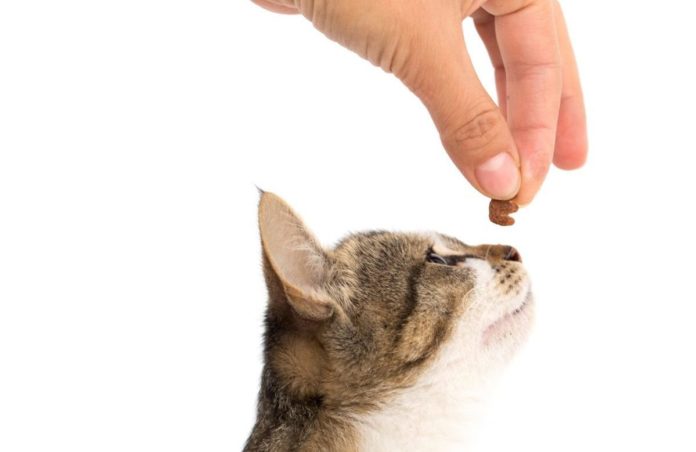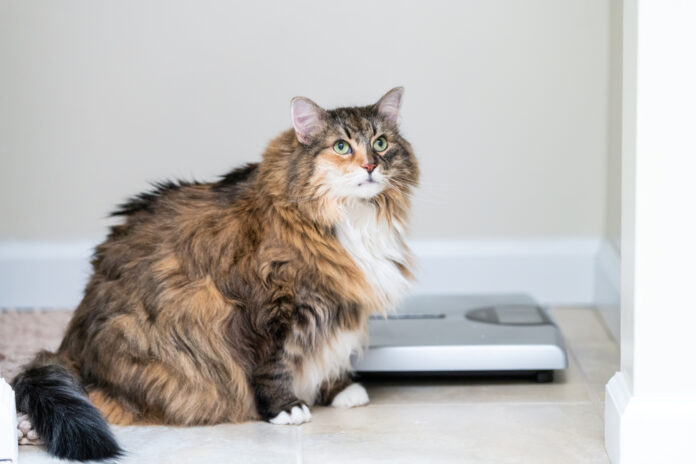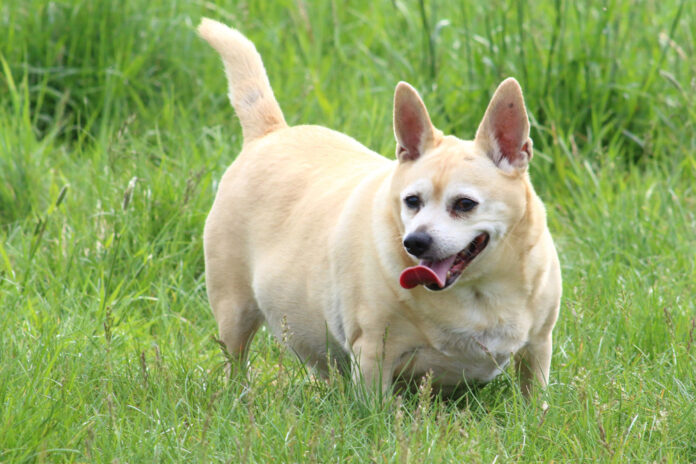Treats for your cat’s teeth

The right treats can help keep your cat’s teeth and gums clean and healthy – but the wrong ones can worsen her dental health. Here’s how to know the difference.
Dental problems are common in cats. But the good news is, prevention is easy. In fact, keeping her teeth and gums healthy is as simple as feeding a high quality diet, taking her for regular dental checkups, and tossing her a few healthy treats!
Treats? Really? Eating treats is a big no-no when it comes to our own teeth and gums. But high quality treats for cats are formulated with healthy ingredients that break down plaque and combat tartar. Quality is key, though, so use these guidelines to know what to look for and what to avoid.
AVOID fillers and chemical additives.
Fillers – grains, corn, wheat, rice and potatoes, for example – are inexpensive ingredients added to pet food and treats to increase their mass and caloric content without adding to their nutritional value. Chemical additives like artificial flavors and colors boost palatability and visual appearance — but it means the treats are pumped full of chemicals. In short, fillers and additives benefit manufacturers, not animals.
So how does this affect your cat’s dental health? Grains, starches and sugars stick to cats’ teeth and lead to bacteria and plaque buildup. These low quality ingredients also harm your feline’s mouth by upsetting the pH balance in her stomach. This internal disturbance presents in the form of bad breath and eventual tooth decay.
LOOK FOR protein as the first ingredient.
Cats are obligate carnivores, which means meat-based protein is an essential component of their diet. Products that contain high quality protein as the first ingredient offer more bioavailable nutrients that build your feline’s immunity and help protect her pearly whites. Raw treats are even better.
Northwest Naturals, a high-quality raw pet food company, offers raw freeze dried treats for cats that contain meat as the only ingredient. “Freeze dried treats are the same as feeding a raw protein, with the moisture removed,” says Patti Salladay, salesperson and marketer. “The active enzymes and bio-available nutrition is intact, which keeps the natural pH and enzymes in the mouth working in harmony.” In other words, raw treats work to keep plaque and bacteria at bay. Patti recommends proteins and organ meats that have been USDA-approved for human consumption.
AVOID artificial preservatives.
Artificial preservatives pose a huge risk to the health of our companion animals. Compounds like BHA, BHT and ethoxyquin prevent products from turning rancid, but there are more natural ways to achieve this. Look for treats containing antioxidants such as vitamins E and C, and rosemary, which act as natural preservatives. While they won’t extend the product’s shelf life quite as much, they aren’t carcinogenic like the chemical alternatives.
LOOK FOR limited ingredients.
You’ve all heard the advice: if you can’t pronounce half the ingredients in a product, don’t buy it. Generally, these lengthy chemical names are a good indication that the product contains unhealthy additives. To ensure a treat is good for your cat, do your research to ensure you understand every ingredient she’s consuming. In the meantime, look for treats with a short list of ingredients you recognize.
SwedenCare USA offers dental treats for cats that contains only 11 natural ingredients, all with a specific purpose. The first ingredient, sea kelp, prevents dental plaque and softens tartar deposits to reduce bad breath, tooth decay, gum disease and premature tooth loss. “What goes in the mouth also goes into the gut,” says Scott Reinhardt, Vice President of sales and marketing. “By providing cats with an effective, tasty dental treat with limited ingredients and no additives or preservatives, we work to ensure that cats maintain quality dental health, digestion and overall health.”
LOOK FOR products fortified with natural supplements.
Ideally, the treats you give your cat should include vitamins, minerals and other nutrients that combat dental issues from the inside out. Look for products that contain probiotics, antioxidants, enzymes and Omega-3 fatty acids. These supplements will help bolster your kitty’s immune system, reduce oxidative stress and inflammation in her mouth, and lower her risk of periodontal disease.
For cats who don’t like treats
Some cats don’t like snacking between meals – and that’s fine. There are other ways to keep her mouth healthy. Start by feeding a high quality diet. Low end pet food that contains inadequate ingredients will contribute to dental problems, not prevent them. Other options include brushing her teeth, using an oral spray, gel or serum, or fortifying her water with a supplement designed for feline dental health. Kane Biotech, for example, offers a water additive made with food grade ingredients that break down bacteria in your pet’s mouth.
If you could help avoid extra trips to the vet by feeding your cat high quality treats, wouldn’t you try it? Your cat will appreciate it, and her teeth and gums will thrive.
Shopping list
Kane Biotech, kanebiotech.com
Northwest Naturals, nw-naturals.net
Only Natural Pet, onlynaturalpet.com
Sweden Care, swedencareusa.com
myDog Dental, mydogdental.com




